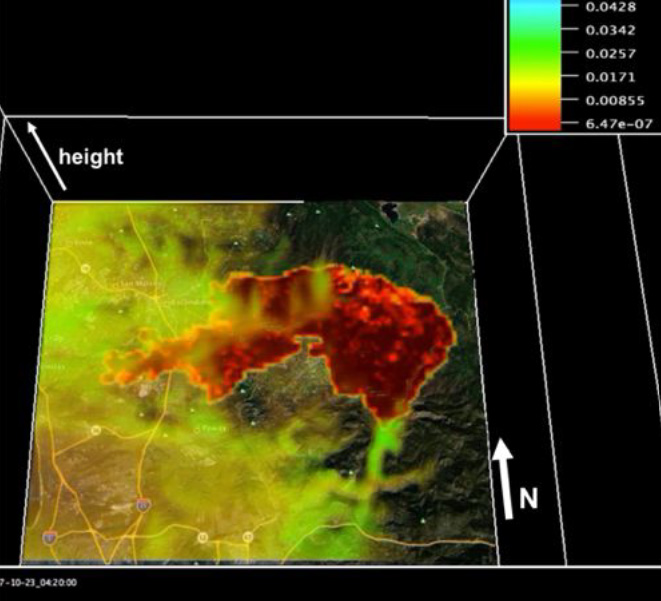Wildfires can significantly enhance summertime ozone (O3) and aerosol concentrations, which can degrade air quality and have adverse effects on human health. While air quality has improved across much of the U.S., the Western U.S. has seen more extreme air quality events, which can be partially attributed to an increase in wildfire activity.
As wildfire events continue to increase in frequency across the region, it will become increasingly difficult for Utah to meet federal air quality standards for O3 and PM2.5. O3 precursors can originate from a number of different sources including anthropogenic and biogenic emissions, as well as inter-basin air exchange processes, and long-range smoke transport. Therefore, it is crucial to investigate wildfire events to assess the contribution of the local fires and the long-range smoke transport to the extreme air quality in the Salt Lake Valley. It is also important to improve understanding on how wildfires interact with urban plumes to help with the implementation of effective regulatory policies and improve air quality modeling capabilities.
Several studies have examined the impacts of wildfires on air quality. However, quantifying the processes responsible for O3 production is difficult. For example, recent studies found a dichotomy in smoke plume measurements where O3 enhancements were observed in some plumes, while other plumes had near background or depleted concentrations of O3. To clarify these discrepancies, sophisticated modeling-based frameworks are needed to elucidate processes behind degraded air quality events as a result of wildfire smoke.
This requires a model being able to account for different sources of O3 and its precursors, smoke aging processes, and chemical interactions between wildfire smoke and urban emissions. Furthermore, there are a variety of important fire-atmosphere interactions such as smoking shading from smoke aerosols and the buoyant fire plume rise that can impact local meteorology and smoke chemistry. Thus, a coupled fire-atmosphere-chemical model is often needed to resolve these types of interactions.
In this project we will leverage a comprehensive observational network along the Wasatch Front that includes in-situ and mobile air quality measurements, as well a novel high-density ozone-monitoring network. We will deploy a coupled fire-atmosphere model with chemistry (WRF-SFIRE-CHEM) to simulate downwind transport of wildfire smoke and its interactions with urban emissions. This high-resolution modeling framework will simulate local and regional chemical transport processes, and complex fire-atmosphere interactions. Through an analysis of observational and model data, the proposed project will specifically address the following questions:
- What are the impacts of wildfires on ozone concentrations along the Wasatch Front relative to the contributions from anthropogenic sources?
- What are the relative contributions to ozone formation from local versus remote fires, and how does smoke shading from smoke plumes impact photochemistry?
- What is the spatial variability and sensitivity of smoke-enhanced ozone to different urban sources of ozone precursors?
We will specifically address the 6th item in the Utah Division of Air Quality’s (UDAQ) Goal and Priorities section, which encourages research on “source contributions to summertime ozone”. Through this project, we will be able to identify the role that wildfire plays towards enhancing summertime ozone (O3) levels along the Wasatch Front, while also elucidating the complex chemical interactions between wildfire smoke and urban plumes. In addition, this project will also target the 1st and 3rd item in UDAQ’s Goal and Priorities section, which seeks applicants that can improve air quality models and elucidate air exchange processes that involve pollutants
- Principal Investigators: Adam Kochanski (San Jose State University), Derek Mallia (UU), Kerry Kelly (UU)
- Study Period: July 1, 2020, – June 30, 2022
- Funded by Science for Solutions Research Grant: $79,768
- DAQ Contact: Chris Pennell ([email protected])

